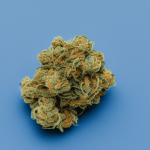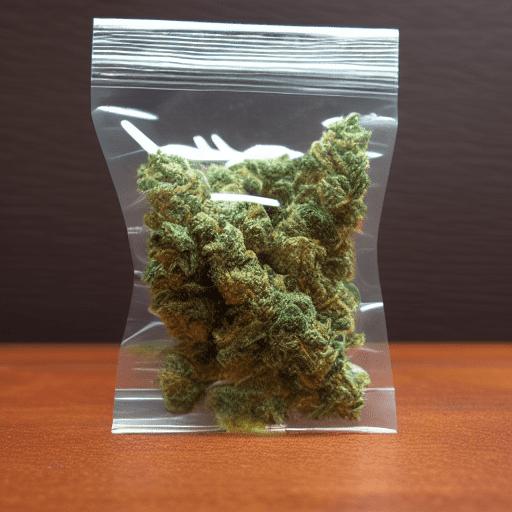What is a unit of sale for cannabis, anyways? If this is what you’re wondering, you’ve come to the right place!

A unit of sale typically represents the unit in which a product is sold. This is an integral part of many Cannabis SOPs and is used for various purposes, such as calculating inventory or determining pricing.
For example, a case of beer is typically 24 bottles, so a case would be considered one unit of sale. Similarly, cannabis is often sold in specific units of sale based on weight.
But what is a unit of sale for cannabis? And how do unit sales compare to volume sales?
Keep reading to learn more about units of sale for cannabis, how unit sales compare to volume sales, and more; all based on cannabis research.
Wondering what it takes to compliantly operate a commercial grow in the cannabis space? Make sure to check out our post about choosing a seed-to-sale software platform before you go!
Volume Sales vs. Unit Sales
Volume sales refer to the total amount of product sold, regardless of the packaging size or quantity. For example, 100 mL of cannabis oil would be considered a volume sale, even if it was sold in 10 separate bottles, each containing 10 mL.
Unit sales, on the other hand, only consider the number of actual units that were sold. So, in our cannabis oil example, if each 10 mL bottle counts as one unit, then the total number of units sold would be 10.
Now that we know the difference between volume sales and unit sales, let’s take a look at some examples of different units of sale for cannabis.
Cannabis Grams
One of the most common units of sale for cannabis is by the gram. Grams are a small unit of measurement, so this is typically how cannabis is sold in smaller quantities, like at a dispensary.
For example, you might see cannabis sold in 1 gram, 3.5 gram, or 7 gram increments.
Cannabis Ounces
Another common unit of sale for cannabis is by the ounce. An ounce is a larger unit of measurement than a gram, which is typically how cannabis is sold in larger quantities.
For example, you might see cannabis sold in 1/8th ounces, 1/4 ounces, or 1/2 ounces.
While cannabis is also sold by the pound or kilo, these units of measurement typically account for volume sales as opposed to unit sales.
How to Determine Number of Units Sold
Determining the number of units sold is fairly simple. For cannabis products sold by weight, the number of units is simply the total weight in grams or ounces divided by the unit size.
For example, if you sold 8 grams of seven cannabis strains, that would be equivalent to 8 units since you’re selling by the gram. However, if you were selling cannabis by the quarter ounce and sold 7 grams of cannabis, this would be equal to one unit.
If you sold 28 grams of one cannabis strain and sold it by the ounce, you’d have sold one unit. But if you’re selling it by the gram, it’s 28 units.
Unit of Sales Formula
The unit of sales formula says that your sales should equal the number of units sold multiplied by the average selling price per unit. Thus, if you’re working with cannabis and trying to figure out what your sales should be, you’ll multiply the average price per gram times the number of units sold.
For instance, if you sell a gram for $10 on average and have sold 2,000 grams in the last week, your sales should equal $20,000.
The Importance of Units of Sale
While the term “unit of sale” might not seem important, it’s actually a key metric that businesses use to track inventory and sales. After all, if you don’t know how many units you have or how many units you’ve sold, it can be difficult to determine pricing or figure out how much inventory you need.
Additionally, units of sale calculations can be helpful when determining cost per unit. For example, if you want to know what it costs to produce one gram of cannabis, you can then determine your cost per unit by dividing the total production cost by the number of grams produced.
This helps you understand your margins and figure out if you’re making a profit on each unit sold. If you’re not profiting on each unit of sale, it’s best to raise the price to the point that you can earn a profit. Now that we’ve understood what a unit of sale is for cannabis, you may be wondering, “What is a bill of sale?”. We’ve got you covered. Check out our linked article, it’s a quick read.
Unit of Sale FAQ
What is unit sales example in cannabis?
Let’s say you have Girl Scout Cookie flower and have $10 unit sales, or 5,000 unit sales. The actual sales in value equals $50,000, and the quantity is 5,000 units. With this being the case, you have unit sales of $10. Unit sales are equal to the total sales value divided by the total sales quantity.
How do you find unit of sale?
Determining the unit of sale for a product involves understanding how you plan to sell the product. For instance, if you’re selling cannabis flower in packages of seven grams, each package is considered a unit of sale. However, if you’re planning to sell by the ounce, that will be the unit of sale.
What is economies of one unit of sale?
Economics of one unit (EOU) is a concept that says businesses can achieve profitability with an individual unit of a good or service. The idea is that it’s cheaper to produce one large batch of a product than it is to produce several small batches. When applied to the cannabis industry, this means that it’s typically cheaper to produce cannabis in larger quantities.
Find Out More
Consult with GrowerIQ to ensure that your business has the best Seed-to-Sale software solutions. Click the button below to get in touch with one of our experts, and find out how GrowerIQ can help your business reach its maximum potential.
Discuss with Our Expert AdvisorsAbout GrowerIQ
GrowerIQ is changing the way producers use software - transforming a regulatory requirement into a robust platform to learn, analyze, and improve performance.
To find out more about GrowerIQ and how we can help, fill out the form to the right, start a chat, or contact us.

